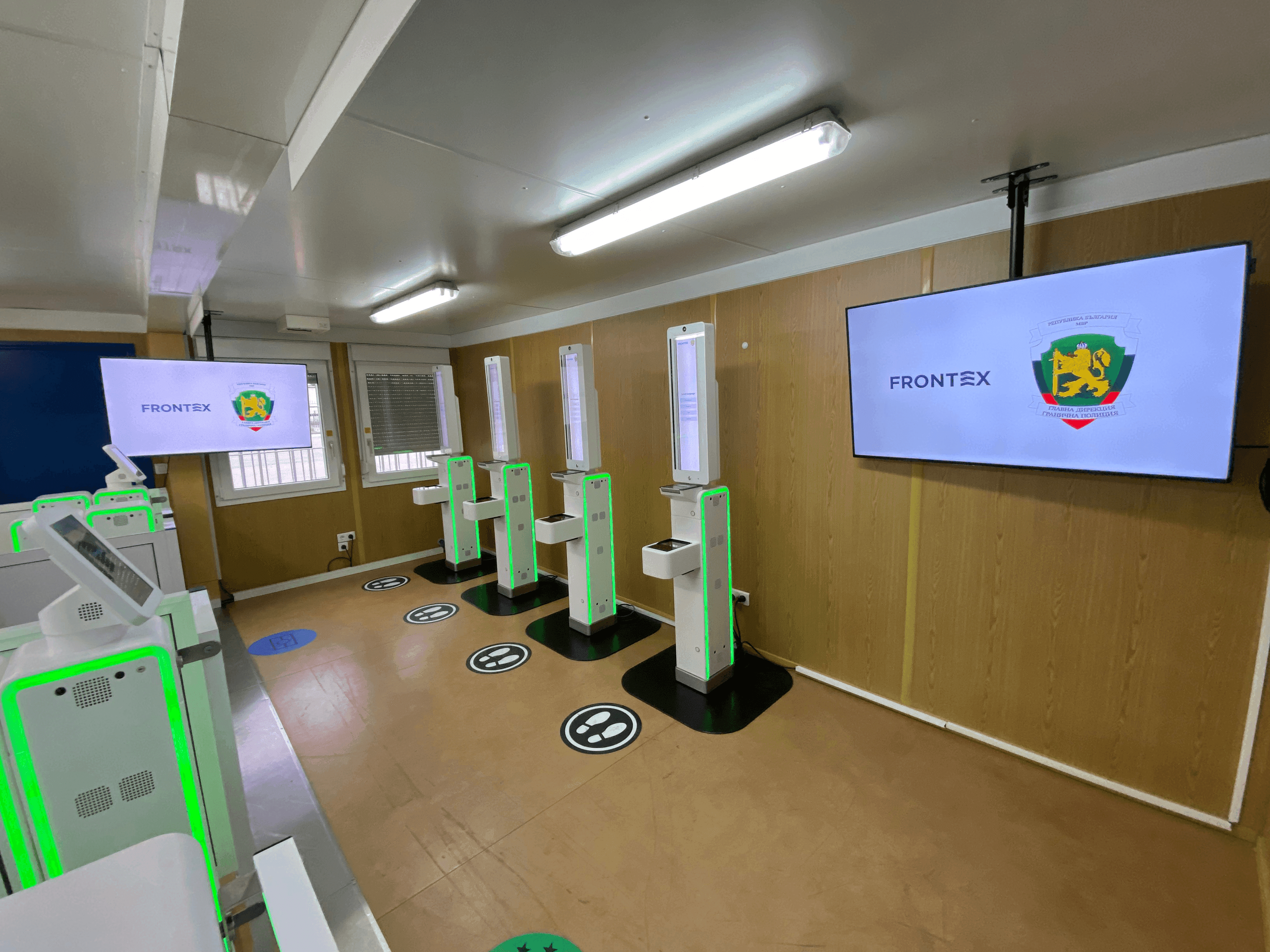Meeting The Challenges of Smart Borders Implementation at Europe’s Land Borders
In June 2021, Vision-Box launched its Frontex pilot - an innovative Entry/Exit System (EES) Pilot at the largest EU land border, Bulgaria. In this article we’ll be looking at land borders challenges in Europe, shed some light as to how our solutions address the requirements for Smart Borders system implementation and reveal how the Frontex Pilot programme in Bulgaria represents a robust example of best practice.
The Need for Smart Borders in Europe
The European Commission is calling upon the 26 member states of the Schengen area to embrace cutting-edge technologies and improved operational procedures, to protect a common external border under the Smart Borders initiative. Using this approach, automated border control and self-service systems for biometric data capture will streamline the movement of travellers, and free border control officers to do the critical job of psychological evaluation and behavioural assessment.
The programme aims at improving the management and movement of non-EU citizens or Third-Country Nationals (TCN) between the states of the Schengen region including the European Travel Information and Authorisation System (ETIAS), and the EU EES.
Under these initiatives, standardised data collection methods will enable EU border control agencies to increase accessibility to traveller information and improve efficiency. It will also allow them to reduce illegal movement and identify potential TCN travellers who overstay their maximum allowance of 90 days within a given 180-day period.
Land Border Issues in Europe
There are several challenges facing the implementation of this approach at Europe’s land borders. Chief among them is the capture of biometric data from travellers under optimal conditions. Complicating this task is the fact that travellers crossing land borders may do so via several channels -- on foot as pedestrians, in privately owned or commercial road vehicles, or by train. What’s more, travellers in individual vehicles may be a mix of EU and non-EU citizens, with differing data capture and processing requirements.
Smart Borders solutions for land crossings must therefore consider the unique complexity posed by each mode of transport. They must cater for travellers with a wide range of demographics, social groups, languages, customs, and varying levels of familiarity with technology.
How The Vision-Box Frontex Pilot Meets Land Border Challenges in Bulgaria
Frontex has recently awarded Vision-Box a trial to implement an innovative pilot solution at two land borders in Bulgaria. The EES Frontex pilot went live in June 2021, in partnership with the Bulgarian Ministry of Interior and the Border Police.
The EES Frontex pilot applies to short-stay visas and visa-exempt TCN, as well as EU citizens entering or leaving the European Union. The project is intended for coaches, cars, and pedestrians at the entry of the Kapitan Andreevo Border Crossing Point (BCP) from Turkey for phase 1 and exit at Kalotina BCP to Serbia for phase 2.

The purpose of the pilot project is to deliver a Self-Service Pre-Enrolment System that will enable travellers to perform a self-service collection of travel document data, biometric data, and other information such as questionnaires on entry conditions. The system already executes real-time queries into the Bulgarian national border control systems, in combination with an EU EES back-end simulator.
The pilot ecosystem consists of enrolment kiosks, biometric corridors, handheld tablets, and related infrastructure, all powered by Vision-Box’s award-winning Seamless Journey Platform. Removes the time-consuming task of manual data collection and verification. This ensures that travellers do not need to physically interact with touchpoints or manually exchange travel documents and biometrics at counters.
Seamless Journey Platform is compliant with EU GDPR regulations through its unique Privacy-by-Design certification. It operates under user-centric business rules and is the kernel of the advanced management of Identity proofing and flow monitoring of traveller processes at the border.
The entire process leverages identity and biometrics tokenisation to digitise the operation. Together with touchless fingerprint sensors for combined verification against the EU EES biometric back-end systems, facial recognition biometrics offers the highest level of convenience for traveller identity proofing.
This approach reduces long waits at checkpoints and curtails crowding at clearance hot spots, allowing travellers to navigate the border quicker and safely. The solution offers significant improvements over the traditional manual and touch-based identification procedures in terms of hygiene, accuracy, and privacy protection.
Here at Vision-Box, we combine state-of-the-art hardware with a highly scalable software platform to manage workflows, the movement of data, and verification protocols across a robust infrastructure. The core enabler is Vision-Box Seamless Journey Platform, a collaborative platform of real-time intelligence designed to accommodate large volumes of information on passenger identity, passenger flows, connected devices and third-party systems, thus streamlining communication between all travel stakeholders and crucially, putting the passenger’s interests at the core.